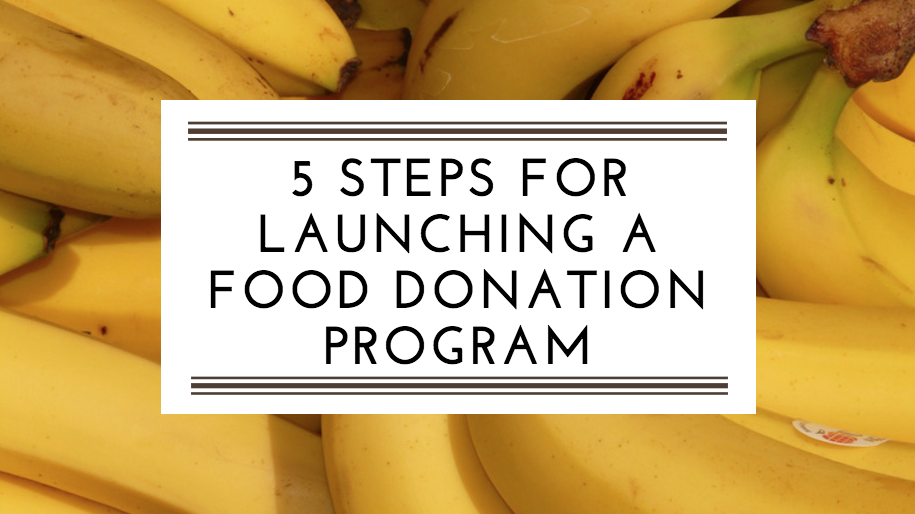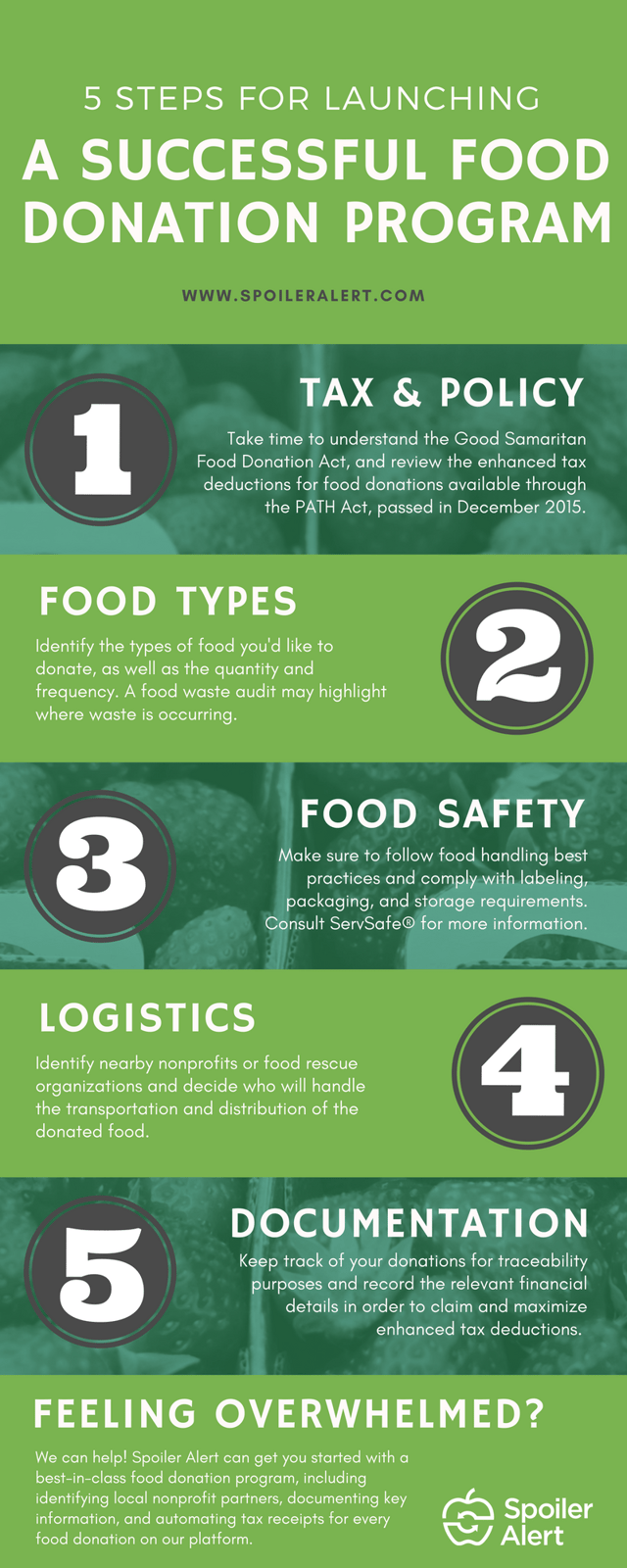
Are you looking to donate your surplus food? Whether you're a wholesale food distributor or food manufacturer with unsold inventory, the first step in thinking about donating food is to understand these five main elements of a successful food donation program.
1. Tax and Policy
Take time to understand the Good Samaritan Food Donation Act and review the enhanced tax deductions for food donations available through the PATH Act, passed in December 2015.
- Liability Protection for Food Donations
- What You Need to Know About the Tax Benefits for Food Donations
Download now: Donating Surplus Food — Resources to Understand the Good Samaritan Act & Liability Protection
2. Food Types
Identify the types of food you'd like to donate, as well as the quantity and frequency. A food waste audit may highlight where waste is occurring.
- A Guide to Conducting and Analyzing a Food Waste Assessment
- 9 Food Waste Management Resources You Need to Use Now
3. Food Safety
Make sure to follow food handling best practices and comply with labeling, packaging, and storage requirements. Consult ServSafe® and your local board of health for more information.
- Food Safety Resources from The Greater Boston Food Bank
- Comprehensive Guidelines for Food Recovery Programs
4. Logistics
Identify nearby nonprofits or food rescue organizations and decide who will handle the transportation and distribution of the donated food.
SIGN UP: Register for Spoiler Alert to have access to hundreds of nonprofits in New England
5. Documentation
Keep track of your donations for traceability purposes and record the relevant financial details in order to claim and maximize enhanced tax deductions.
DOWNLOAD NOW: Enhanced Tax Deductions for food donations
Check out the five steps in this infographic:

Feeling overwhelmed?
We can help! Spoiler Alert can get you started with a best-in-class food donation program, including identifying local nonprofit partners, documenting key information, and automating tax receipts for every food donation on our platform.
Start by downloading our checklist that gives you nine steps to work through when donating food.
.png?width=250&name=SpoilerAlert_WhiteLogo_LeftStacked%20(7).png)
